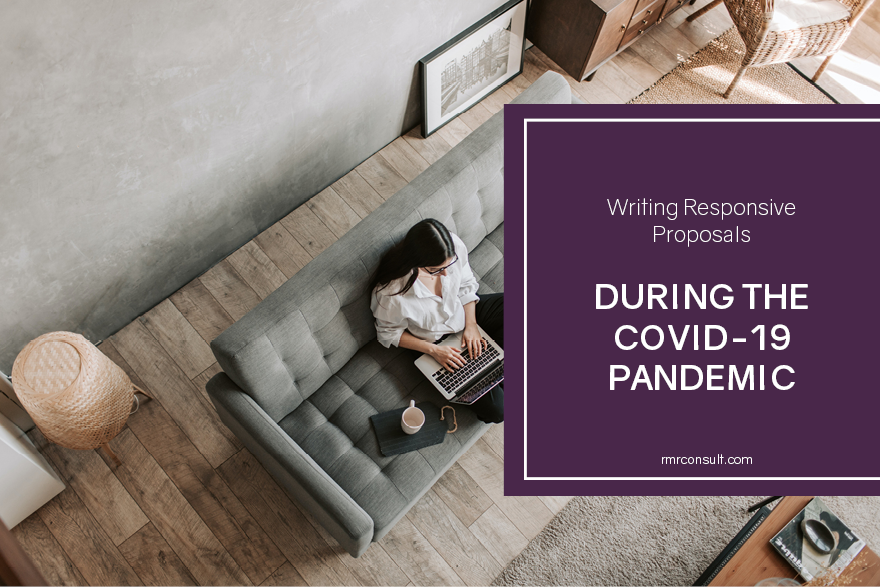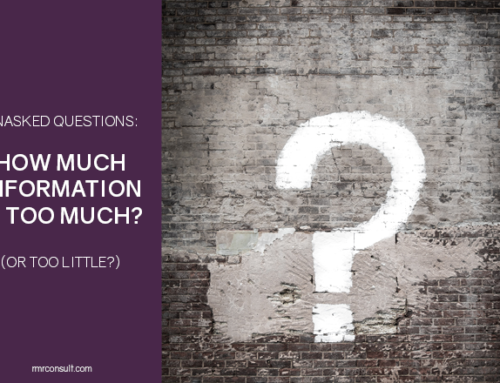Responsive Proposals During the COVID-19 Pandemic
Most of us have settled into our new normal by now. We’ve set up, cleaned out, or spruced up home offices. We’re Zoom pros, and we have enough photos of our furry friends or children (aka our new coworkers) ‘helping’ us work to fill our social feeds for weeks. We’ve adapted quickly.
So have our clients. They’re facing the same work from home and social distancing challenges that you are, and, depending on their location or yours, might be dealing with more or less extreme measures than you are. But you know this. The news and your social feeds are screaming it at you every day, and your new reality is a constant reminder that things are different.
You know things are different. Have you thought about what that means for your marketing efforts? Your proposals? Chances are you’ve already noticed the changes, have already started to respond to them.
Procurement procedures have evolved on the fly in response to full or partial business closures. Deadlines have been extended. Requirements for hard copy proposals have been removed, replaced with instructions for electronic delivery. But providing a responsive proposal today is about so much more than merely acknowledging updates to the RFP. Your content needs to be responsive to the current climate as well. Here are a few things to think about:
What effect has COVID-19 had on your client?
Virtually no corner of our world hasn’t been affected by the coronavirus. Whether you’re proposing on a new healthcare building, school, mixed-use development, airport, or government building, the chances are high that COVID-19 has affected the operational aspects of the client organization. This, in turn, is going to influence the development of future projects. At the very least, it will affect the project delivery, but it may also alter the design and development of the project. The first step toward writing a responsive proposal is acknowledging that your client is probably in the midst of significant changes in response to the pandemic. Identify these effects as you would potential project challenges, and propose solutions.
For example, think about how the future of air travel or healthcare delivery will be affected by the current pandemic. What changes can these industries (and thus, our clients) anticipate in terms of operations, delivery of services, safety, security, etc.? How will that translate to what you do, either as a designer or a contractor?
What effect will COVID-19 have on the project delivery?
It’s hard to say when we’ll be back to ‘business as usual’ and what that might even look like post-coronavirus. Your proposal should anticipate potential changes in project delivery, like dramatically reduced in-person meetings, charrettes hosted virtually, etc. You’ll need to discuss how you plan to provide responsive services without your ‘normal’ tools. Construction has also been significantly impacted by measures to stifle the pandemic, with longer lead times on supplies, extended schedules due to limited personnel on-site, even complete cancellations or delays in projects. Anticipate these unique project delivery challenges, address them, and provide realistic, responsive solutions.
For example, if you usually host in-person charrettes and won’t be able to do that, how will you encourage stakeholder participation during design? Or, if your go-to method for accelerating construction schedules is to schedule multiple scopes simultaneously, how will that change with limits and restrictions on construction sites?
What effect has COVID-19 had on your business?
It’s imperative that your proposal shows three things:
1) How seriously you take the health and well being of your employees, your clients, their families, your community, etc.;
2) How quickly you took measures to ‘flatten the curve’ and protect your staff, your clients, and your business;
3) Exactly what actions you’ve taken so far, and what you are doing now to continue operating as seamlessly as possible.
Addressing these three things will help to inspire confidence in your business stability and ability to adapt quickly to unforeseen conditions.
Keep your tone professional.
It’s easy to veer into doom and gloom when discussing the effects of COVID-19 on our daily lives, but you’ll just depress the review committee if you dive straight into complete despair. Remember, proposals are always about solving problems, not creating them, so don’t write as if the pandemic is an insurmountable challenge. Also, keep in mind that, because of the uncertainty around things like shelter in place orders, work from home initiatives, etc., your reviewers may have different ideas about when things will be back to normal. Discuss your solutions in terms of adaptability, focusing on how you’ll respond to changes in business and service delivery as they arise during the project.
Be proactive.
Most clients have either delayed proposal due dates or switched to completely digital deliveries. If your RFP hasn’t been amended, be proactive in reaching out to see if their offices are open, whether they’re still accepting hard copies, and whether they would consider electronic copies in place of hard copies.






Leave A Comment